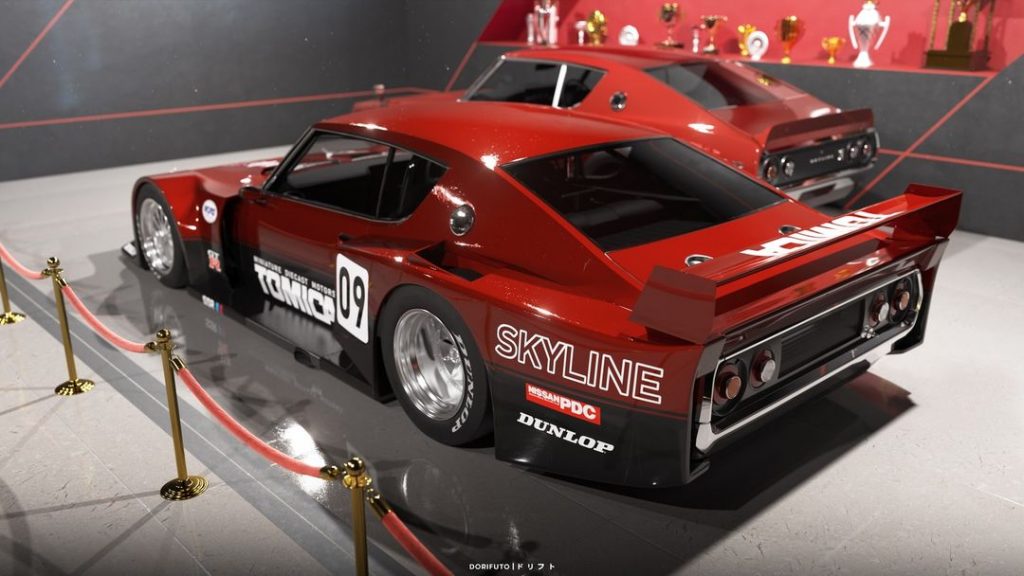The 1970s were dark times for the Nissan Skyline GT-R—with the original Hakosuka iteration built between 1969 and 1972 having taken off, the carmaker introduced a second generation for 1973. However, due to the oil crisis which took place that year, production stopped after just 197 units. Things were similar in America (this is what killed/sterilized classic muscle cars), but while names like the Camaro could at least seek refuge in the racing world, where fuel efficiency standards didn’t matter, the Gen 2 “Kenmeri” GT-R didn’t have such privilege. So why don’t we go back into the past with this rendering and fix that?
In the alternate timeline painted here, the Kenmeri GT-R, which owes its nickname to an ad featuring a young couple, Ken and Mary, having a good time with the sports car, evolved into a full-fledged Group 5 racer.
The digital artist known as Dorifuto Visuals, who took on the task of giving the JDM hero a broader past, chose this class, which Nissan itself explored in the early 1980s, for a reason. We’re looking at “special production cars” here, or silhouette racers. So while these resembled their street counterparts and kept the standard body width, they featured monstrous widebodies, with brutal hardware lurking behind them.
Visiting the Nismo factory to see the race car in this rendering
The 1973 Skyline GT-R is portrayed next to a factory model, so you can easily notice the visual differences mentioned above. And that’s not all: the vehicles are shown inside the Nismo headquarters in Japan. The museum-grade facility is portrayed as we’d see it in the real world. And it looks like in this timeline, the Kenmeri GT-R didn’t just race, it was a trophy magnet too!
The aero enhancements brought to the vehicle maintain the classic identity, while sporting period-correct work. For one, the rear part of the body is perhaps the most realistic, as you could swear the history books were graced by such a Nissan. The wing? This is an efficient offering, as dictated by the need to impress the stopwatch.
For the record, while Nissan did engage in motorsport in the 1970s, most of its efforts were focused on rallying during that time. As for affairs that are mostly understood by the die-hard JDM fans, we’ll remind you the company was also involved in Tokusyu Touring Car racing via its Datsun brand, with this mostly involving tiny coupes animated by tiny motors. But hey, Japan’s roads are populated by kei cars, so enthusiasts over there don’t necessarily feel this way about the size of those motorsport tools.
This seems like a proper time to indulge in such a GT-R digital fantasy, especially since the fate of the badge is still unclear. You see, while Nissan has confirmed there is a future for Godzilla, it’s told us little else, with some of the wildest rumors out there talking about an electric successor for the outgoing R35.






